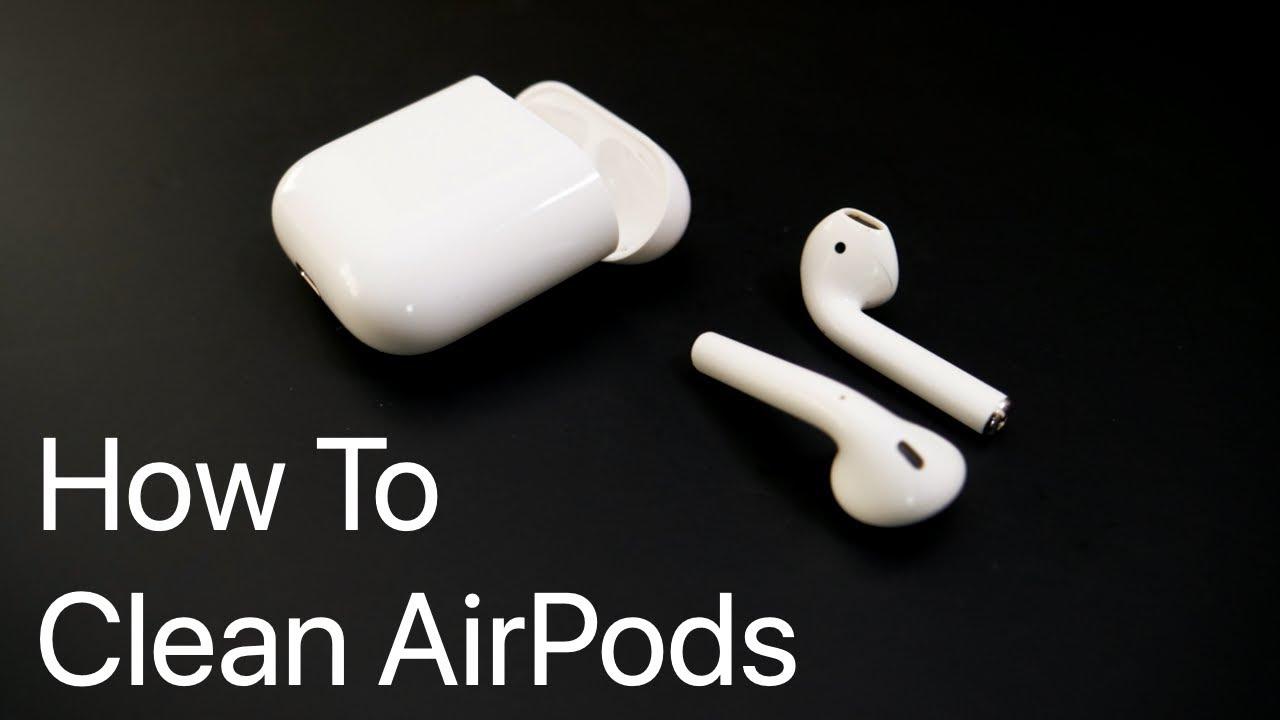Even if there isn’t a global pandemic, there are plenty of reasons to clean your headphones thoroughly. This is true if you use them frequently. Clean headphones are happy headphones—and ones that are infected less with microbes—whether you have over-ear cans or truly wireless earbuds.
Why should you clean your Air pods, Earbuds & Headphones?
According to a 2008 study, filthy headphones can be a vector for disease transmission. You increase your chances of getting an ear infection if you share headphones with someone who has one and vice versa. Furthermore, wearing headphones frequently can increase the humidity in your ears, making them more hospitable to bacteria.
How to clean your Air Pods:
- A lint-free cloth, water and alcohol, and a fine-edged equipment like a toothpick to dig out earwax are all you’ll need to clean your AirPods. Cleaning your Air Pods might help them sound better and reduce the number of germs you’re touching each day.
- Be utmost careful not to get water or alcohol inside your AirPods or case when cleaning them.
You’ll need a soft, lint-free cloth material and a gadget with an excellent end to clean the earphones.
We recommend purchasing a “microfiber” cloth for the cloth. A toothpick, dental floss stick, bobby pin, needle, or another household item can be used as a fine-edged tool; if you don’t want to use something sharp, a cotton swab will suffice.
- Lightly dampen the lint-free cloth with water and wipe the outside of the earphones.
- Dry the earbuds with a dry, lint-free towel, being cautious not to get liquid in any of the apertures.
- Use your fine-edged tool or a dry cotton swab to remove earwax from the earphones’ speaker hole. Carefully dig out the earwax, paying particular attention to the speaker’s edges. Be careful not to hurt yourself or pierce the speaker if you use a sharp item.
How to clean its case:
Remove the Air Pods from the case before cleaning it.
- Wipe the outer side of the case with a dry, lint-free cloth. You can soak the cloth with alcohol for tougher stains, but be sure to dry the spots afterward. Make sure there’s no moisture in the Air Pod holders or the charging port of the case.
- Use a soft bristle kind of brush to clean the charging port of debris.
- Use a soft bristle brush or a soft toothbrush to clean the inside of the case; the bristles will assist in scraping debris out of the nooks and crevices.
How to clean your Earbuds?
Earbuds are different from huge over-ears in that their smaller size necessitates a steadier hand than headphones. Remove the ear tips first, being careful not to drop them. Then, using a Q-Tip, thoroughly wipe the ear tips to remove any earwax or dirt built up. Turn your attention to the real earbuds once you’ve finished.
Use the metal tip of your earbuds’ cleaning tool to remove any built-up earwax, being careful not to push it farther in. Q-Tips can be used as a cleaning tool if you don’t have one. Gently dab at the nozzle to remove excess earwax, but don’t press too hard, or the fibres will become entangled.
The procedure for truly wireless earbuds is essentially the same as for regular earphones. The only difference between the earbud varieties is that a charging case must be sanitized as well.
How to clean your Headphones?
You’ll need a few essential items before we dive into the nuances of each type of headphone. While you may not utilize everything on this list, it is still a good idea to have it as a starting point.
- Towel or paper towels
- Toothbrush
- Tweezers
- Q-Tips
- Rubbing alcohol (greater than 63%), Diluted bleach, or Hydrogen Peroxide
- Hand soap
- Gloves
- Goggles (at least glasses)
- Remove the ear pads and stretch the headband as much as feasible, depending on the type of your headphones, so that you can reach every nook and cranny. “Clean headphones” also refer to the absence of dirt or grime inside them. Grab your toothbrush and go to town after you’ve removed the ear pads. Brush away as much bigger dirt and particles as possible.
- Keep an eye out for the drivers; you don’t want to push the dirt around by accident. After that, use the tweezers to remove any hairs or debris that may have become lodged. We can go on to disinfection now that all of the large pieces of debris have been removed.
- Place your headphones on the towel and go get your your preferred cleaning liquid. You can use hydrogen peroxide, but you can also use diluted bleach or 63 percent alcohol, which is commonly suggested for killing viruses. Alcohol isn’t suitable for leather or plastic, so don’t soak the paper towel or cotton ball. Use just enough to give your headphones a good cleaning—no need to soak them.
- Start with the ear pads and work your way up to the headband to get a sense of how much pressure you’ll need to use to remove dirt. Working your way down to the ear cups, double-check your technique because you’ll need to be more exact until you get to the drivers.
- Don’t get any liquid within the drivers because most headphones don’t play well with liquids. Hold your headphones at a 90° angle with the open drivers parallel to the floor to make this simple. You can now gently wipe them, and the liquid will be pushed away from the interior components by gravity. Q-Tips can be used to access any hard-to-reach region.
There’s no way around it: you need to clean your earphones or headphones regularly if you want them to last. Cleaning them after each usage is recommended by some experts while cleaning them once a week is recommended by others. It’s critical to maintain your audio gear clean, regardless of frequency, for your hygiene and the audio quality.
After all, getting a pair of headphones you’ve had your eye on for months is pointless if you’ll have to throw them out because you didn’t look after them.
Author Bio – Vivek Roy is an enthusiastic Tech and gadget blogger from India. He loves to share tips and news from all around the world. For more information about him visit his website Leaf Studios.



















![TamilMV Proxy List Top 30+ [Unblock TamilMV Sites] TamilMV Proxy Unblock](https://technewsgather.com/wp-content/uploads/2023/04/17825836_SL-121019-25870-14-1-100x70.jpg)